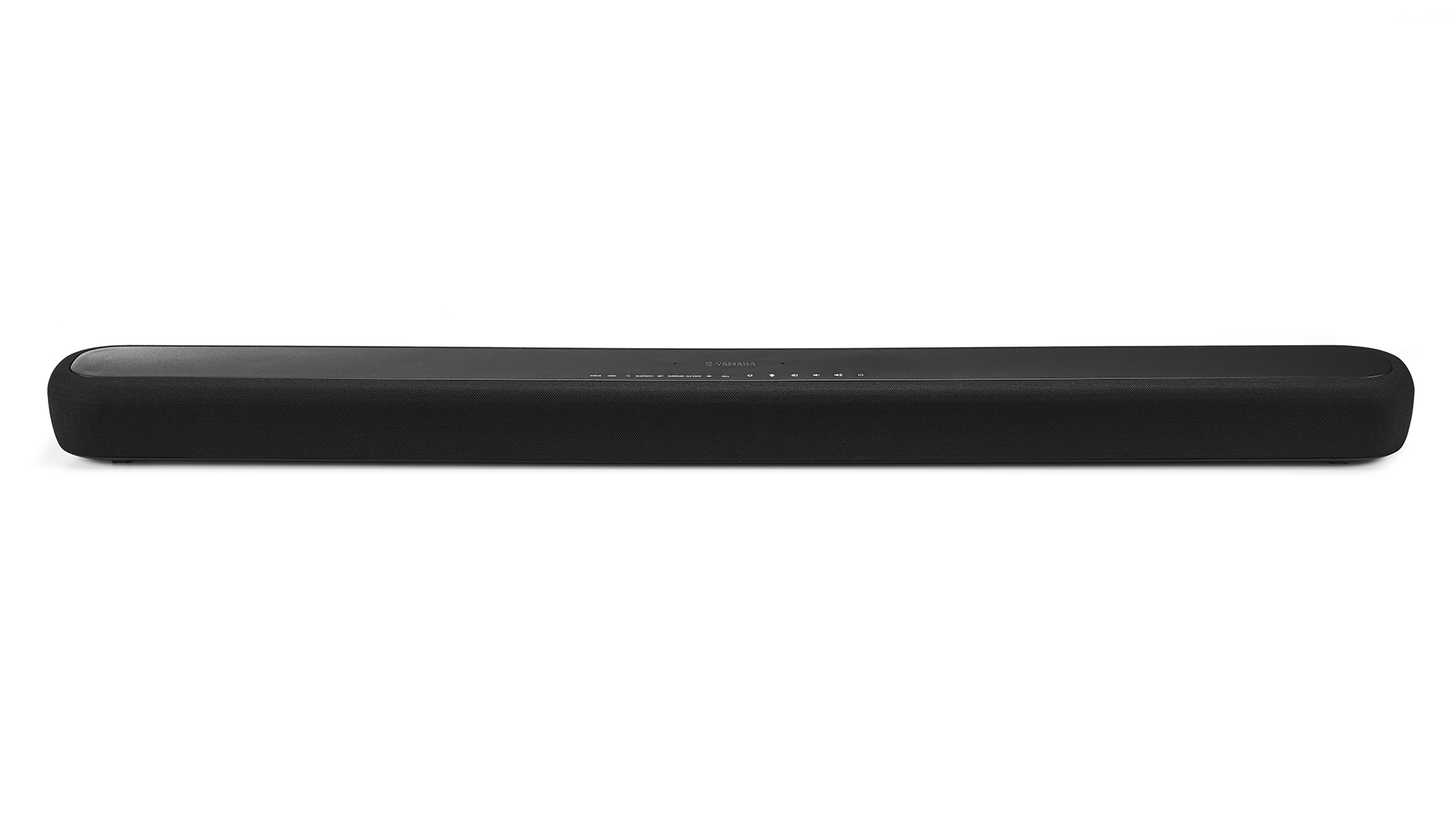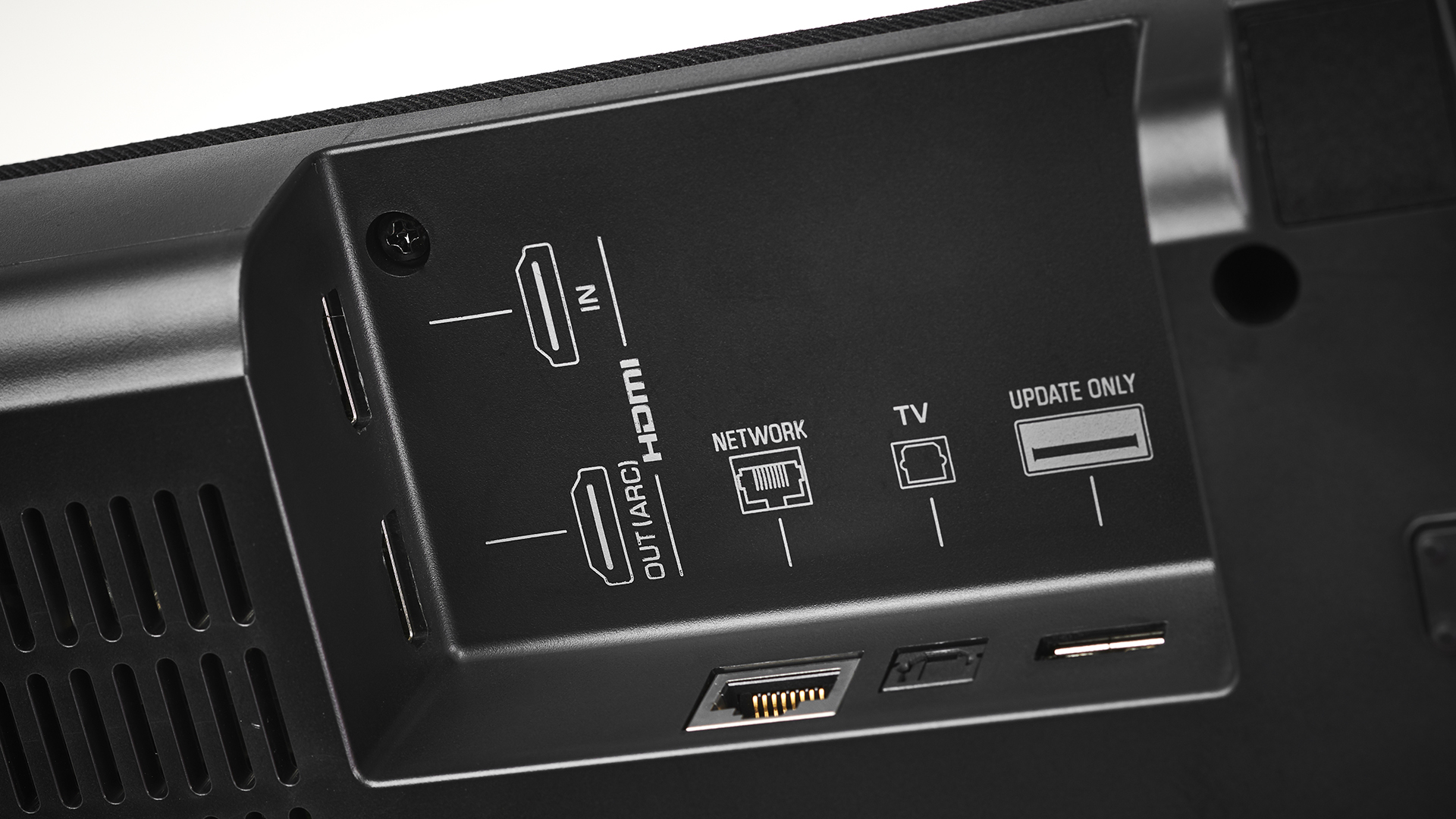What Hi-Fi? Verdict
The YAS-209 gets a lot right, but a few sonic flaws keep this soundbar off the top spot
Pros
- +
Spacious, weighty sound
- +
Well-placed ‘surround’ effects
- +
Clear, projected dialogue
Cons
- -
Less room-filling than some
- -
Rivals are subtler and punchier
- -
Struggles in stereo
Why you can trust What Hi-Fi?
In the world of affordable soundbars, three major trends appear to be happening right now: the ditching of separate subwoofers, the addition of voice control and the move to Dolby Atmos delivered via eARC. Of those three trends, Yamaha is adhering to just one with its new YAS-209 soundbar.
Like its predecessor, the YAS-207 (which continues alongside the YAS-209 for the time being), Yamaha’s new soundbar comes with a large, wireless subwoofer and eschews Dolby Atmos and eARC in favour of DTS Virtual:X and standard ARC. The headline change is the addition of Amazon Alexa, which is built directly into the bar (rather than the remote control), thanks to two far-field microphones.
Of course, what matters most is the performance, and the Yamaha YAS-209 largely upholds the fine reputation that Yamaha has made for itself with soundbars.
Build

While there’s not a huge amount of room for creativity in the design of a soundbar – long and thin is almost a given – the YAS-209 is more stylish and fashionable than most. Its rounded edges and fabric cover make it look as though it could belong to the Amazon Echo family, albeit once removed.

Inputs HDMI, Optical, ARC
eARC No
Audio format support DTS:X
Wi-fi Yes
Bluetooth Yes
Soundbar
Dimensions (hwd) 6.2 × 93 × 10.9cm
Weight 2.7kg
Subwoofer
Dimensions (hwd) 42 x 19.1 × 40.6cm
Weight 7.9kg
Compared to the benchmark soundbar at this price, the Sonos Beam, the Yamaha is a fair bit wider (93cm to 65cm) but roughly the same height and depth. That means it will fit neatly in front of most TVs without blocking signals from the remote. It can also be cheaply and easily wall-mounted, thanks to a pair of integrated screw holes.
The YAS-209 features a dedicated subwoofer, which has clear benefits in terms of bass depth and weight, but means there’s a second, much larger box that needs to be housed. Being wireless means less clutter and increased versatility, but there’s a limit to how much it can be hidden away – the subwoofer performs best in free space and relatively close to the soundbar.
On top of the soundbar, there is a row of touch-sensitive ‘buttons’ that control volume, power, input-switching and the microphones. There's also a row of tiny LEDs, each one labelled with the name of a source or feature. In the absence of a display, these LEDs light up in various different configurations to indicate when you’ve changed a setting.
The latest hi-fi, home cinema and tech news, reviews, buying advice and deals, direct to your inbox.
Working out what each light arrangement indicates means referring back to the manual, which isn’t ideal. Thankfully, the sensible out-of-the-box configuration keeps tweaking to a minimum, and the Sound Bar Controller app offers a clearer method for changing settings.
You can also use the app for everyday control of the soundbar, but there’s also a simple bundled remote for quick switching of inputs and sound presets.
Features

Around the back, there’s a single 4K and HDR-compatible HDMI input and ARC-enabled HDMI output. There’s also an optical input for TVs that don’t support ARC, and an ethernet socket for those who prefer to use a wired network connection over wi-fi. Connecting the YAS-209 to the internet enables, among other things, Spotify Connect, and there’s also Bluetooth on board.
The Yamaha accepts Dolby Digital, DTS and PCM soundtracks in up to 5.1 channels, with no native support for the Dolby Atmos or DTS:X object-based audio formats. Instead, the bar uses DTS Virtual:X processing to add height to incoming signals. This feature is activated via the ‘3D Surround’ button on the remote.
With DTS Virtual:X disabled, the Yamaha will still add virtual surround sound processing to audio, just without the added height effects, but you can turn processing off entirely by enabling the stereo mode. We’d recommend that you do that when listening to music. Otherwise, we more or less stick to the Movie preset.
We also suggest that you stick with the Bass Extension mode switched on, as the sound is a little lightweight without it. Clear Voice, meanwhile, which is designed to boost dialogue, seems unnecessary throughout our test but might be of benefit to those who are hard of hearing.
Sound

Kicking off with the DTS soundtrack of Harry Potter And The Deathly Hallows – Part 2 on 4K Blu-ray, we’re immediately impressed by the YAS-209’s alacrity. There’s real solidity and weight to the magical barrage fired upon Hogwarts, and as the camera sweeps overhead during the ground attack, effects accurately swing around the broad, tall soundstage offered by the DTS Virtual:X processing.
Predictably, there’s plenty of bass here, but it doesn’t overpower the delivery. The single-unit Sony HT-X8500 suffers from a muffled, muddy midrange, but the Yamaha remains clear and well projected, even during intense action.
Switching to the bombing-run scene of Unbroken, the YAS-209 offers a spacious and atmospheric delivery. It’s not quite as room-filling as the Sony, but there’s plenty of width and height to the thrumming engines of the B-24 Liberator and surrounding noise. When the action kicks in, the intense machine gun fire from the strafing fighter planes is nicely focused and well placed in the sound field.

But the Yamaha’s movie performance isn’t perfect. While punchy and dynamic next to some in the class, there’s a nagging sense that the bar is pulling its punches. Leading edges are just a little less crisply defined than they might be, and those subtler dynamic builds aren’t quite there, leaving some scenes a little short of drama.
And, while voices are admirably clear and well projected, they’re tonally a touch inconsistent, coming across a little weak and unnatural in the lower registers, possibly around the point that the soundbar hands over to the subwoofer.
It falls a little short of the most musical soundbars in the class, too. You have to switch to the stereo mode in order to avoid music coming across echoey and audibly processed, but the resulting sound is a bit flat.
Verdict
This is a soundbar capable of delivering big, weighty movie soundtracks with expertly placed and exciting surround effects, while also ensuring crucial elements such as dialogue are clear and well projected. It gets a huge amount right, but there are a few niggling flaws and the excellent standards of the class mean you can buy even better for similar money.
SCORES
- Sound 4
- Features 4
- Build 4
MORE:
The best cheap soundbar deals 2019
Read our Yamaha YAS-207 review
What Hi-Fi?, founded in 1976, is the world's leading independent guide to buying and owning hi-fi and home entertainment products. Our comprehensive tests help you buy the very best for your money, with our advice sections giving you step-by-step information on how to get even more from your music and movies. Everything is tested by our dedicated team of in-house reviewers in our custom-built test rooms in London, Reading and Bath. Our coveted five-star rating and Awards are recognised all over the world as the ultimate seal of approval, so you can buy with absolute confidence.

